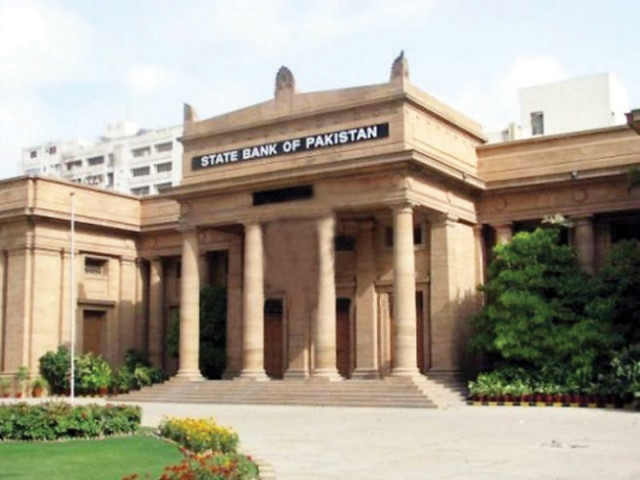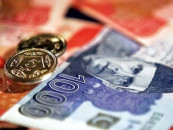SBP injects Rs675 billion into banks
Indicates benchmark interest rate to remain unchanged despite high inflation reading

The State Bank of Pakistan (SBP) has injected over Rs675 billion into commercial and Shariah-compliant banks for a tenure of 63 days, hinting that the benchmark interest rate will remain unchanged despite the spike in inflation readings in October.
The central bank has injected the funds at a stable rate of return of 15.2%, ahead of which the government is scheduled to borrow from commercial banks to repay maturing domestic debt and finance the budget deficit. The government will auction its debt securities, including T-bills and Pakistan Investment Bonds (PIBs), to commercial banks to borrow the money.
Speaking to the Express Tribune, the Head of Research at Ismail Iqbal Securities, Fahad Rauf said, “The injection of liquidity through conducting a 63-day open market operation (OMO) is primarily aimed at stabilising cut-off yields (commercial banks’ lending rate on financing to the government) on T-bills and PIBs.”
“The injections for a longer tenure at a stable rate-of-return indicates to commercial and Shariah-compliant banks that the central bank wants to hold its key policy rate at the existing level of 15%. This comes despite the inflation reading spiking to 26.6% in October, as compared to 23.2% in the previous month of September 2022,” he added. The policy rate is a tool available with central banks around the world to create a balance between inflation readings and economic growth.
“The rise of inflation in October should convince the central bank to hike its key policy rate in the forthcoming monetary policy announcement scheduled for November 25, 2022. The central bank, however, will maintain the policy rate at 15%, as a further hike will hurt economic growth in the current fiscal year of 2023,” explained Rauf.
Earlier, the central bank had revised its projection for economic growth to 2% for FY23 on October 10, 2022, as compared to 3-4% for the year before on account of the recent floods that ruined agronomy worth over $30 billion. The country had hit a 6% growth rate consecutively in the past two years, that is FY21 and FY22.
“The SBP will not cut its policy rate this month, as central banks around the world have kept increasing their benchmark interest rate, including the US’s Federal Reserve and the Bank of England,” observed Rauf.
The analyst recalled that the cut-off yields on government debt securities had decreased slightly around the time Ishaq Dar became the new Finance Minister in September, 2022 and have remained stable since then.
“Inflation readings will decelerate to around 23% in the ongoing month of November, after the government is done with its electricity pricing adjustments,” predicted Rauf.
The Pakistani rupee stabilised in the interbank market on Friday, inching up 0.01% (or Rs0.03) to close at Rs221.92 against the US dollar.
The rupee has managed to consolidate following the weakening of the US dollar against other global currencies, amid an uptrend in international petroleum prices.
Besides, the 20% increase in the country’s foreign exchange reserves to around $9 billion in the week ended October 28, 2022, compared to a 40-month low at around $7.5 billion in the prior week, has also supported the rupee.
In the prior two days (Wednesday and Thursday), the rupee had lost 0.59% (or Rs1.30) cumulatively.
Published in The Express Tribune, November 5th, 2022.
Like Business on Facebook, follow @TribuneBiz on Twitter to stay informed and join in the conversation.



















COMMENTS
Comments are moderated and generally will be posted if they are on-topic and not abusive.
For more information, please see our Comments FAQ